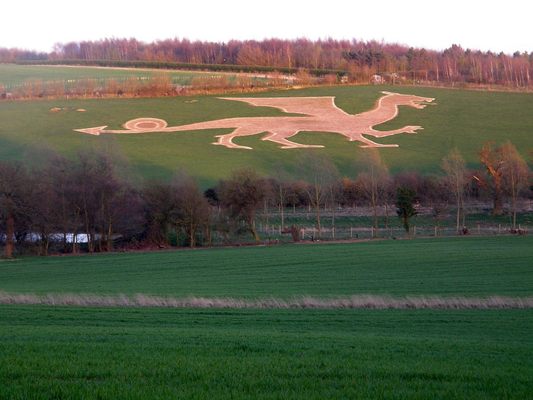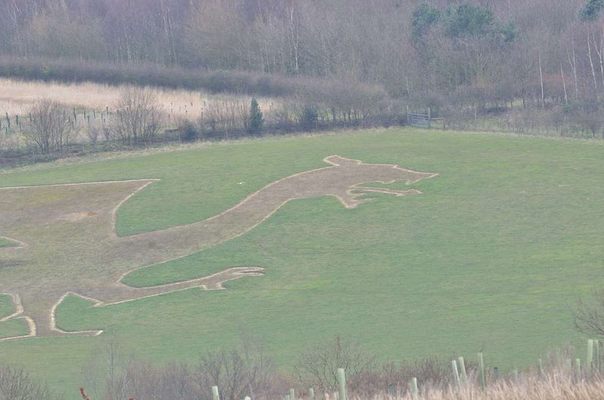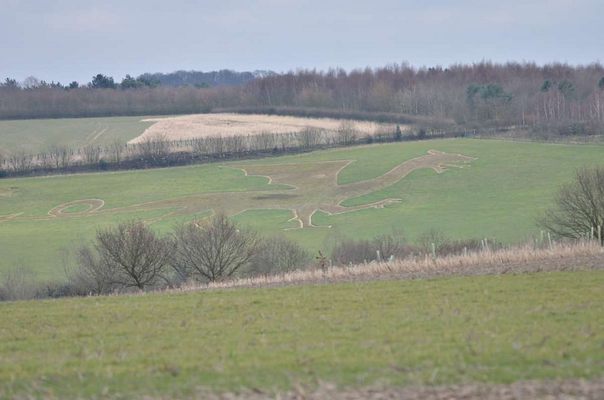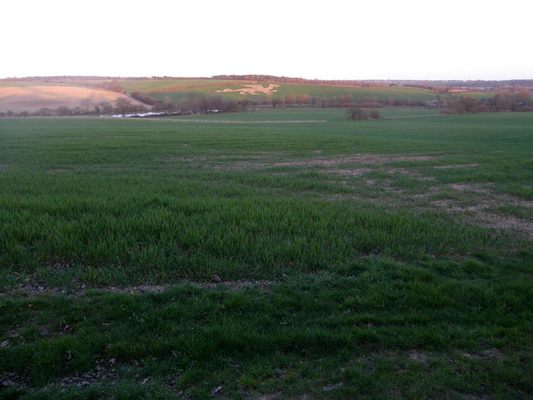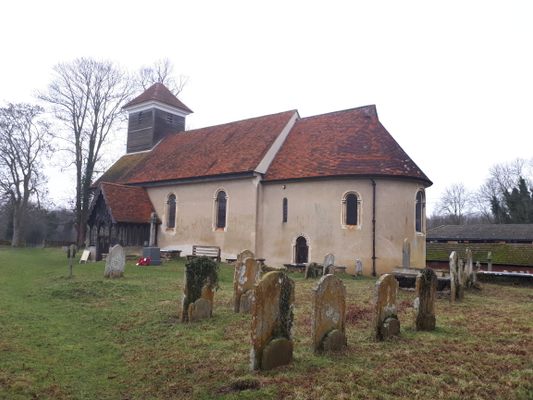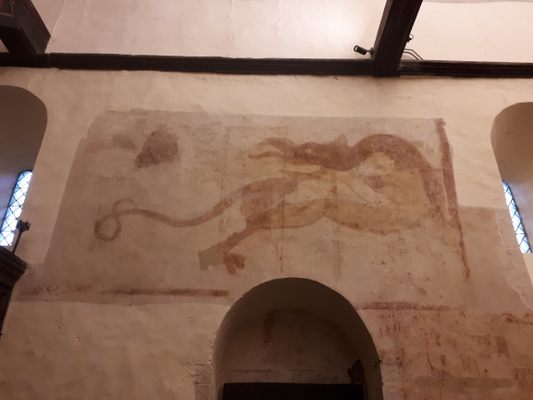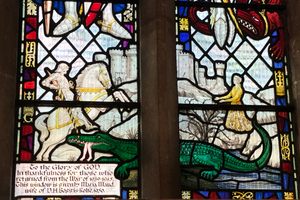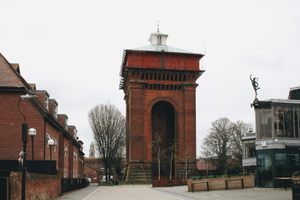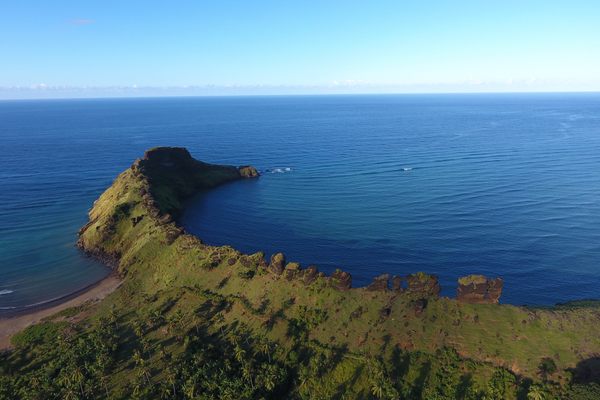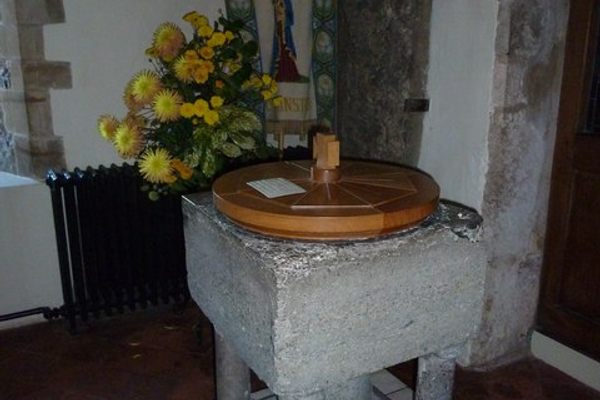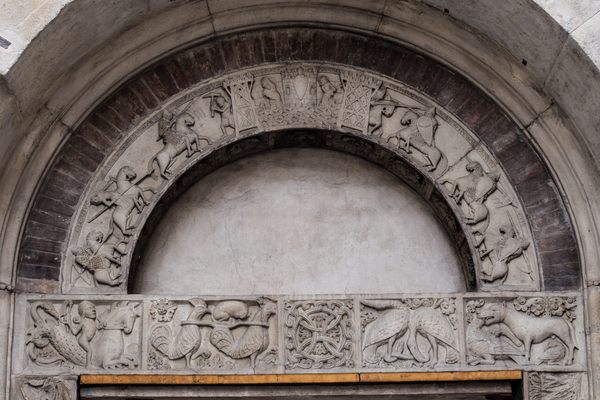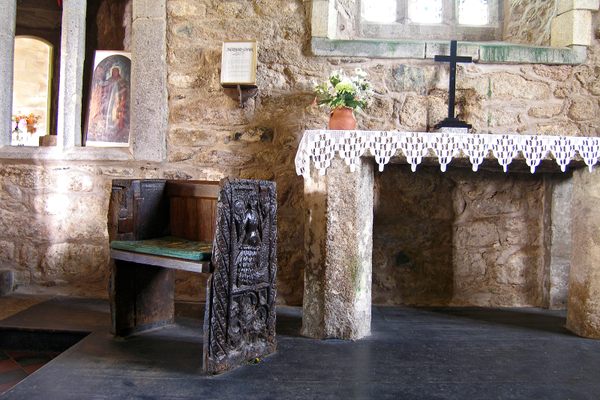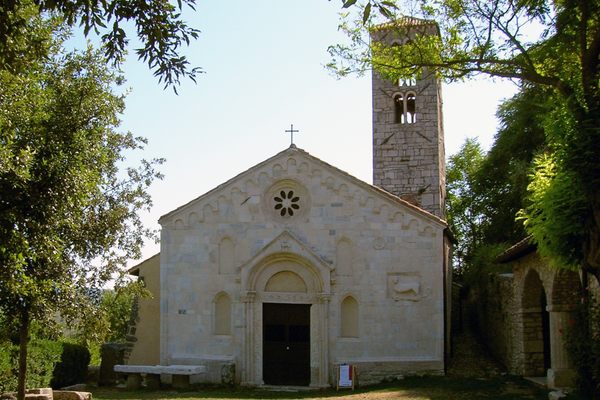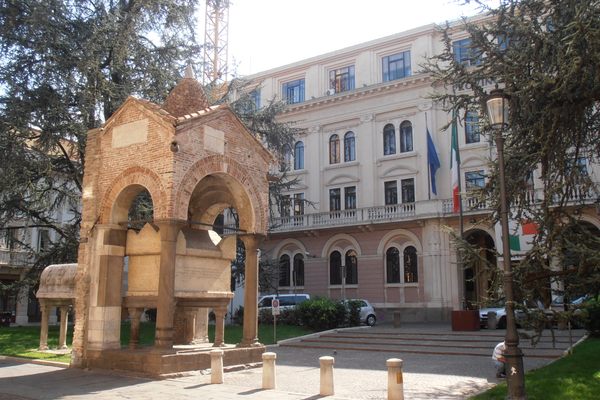About
The English are notably fond of carving giant white horses into the chalky hillsides of southern England. Dragon geoglyphs, on the other hand, are much more rare. In fact, there may be just one such fiery hill figure, located in the town of Bures. It's an appropriate spot, given the longstanding local legend that an enormous dragon was sighted here in the Middle Ages.
The story of the Bures dragon was first recorded in 1405 by a local monk, and recounted several times thereafter. According to the account, several townsfolk claimed they saw the terrifying creature firsthand. The huge beast had a crested head, serrated teeth, and long tail. It terrorized the village, breathing fire at anything that moved and even killing a shepherd and his flock.
The town was panicked. The men of the fiefdom tried to kill the dragon with arrows, but they bounced right off the monster's hard skin. Soon, men from across the country were summoned to slay the dragon, which fled down river toward the adjacent village of Wormingford and disappeared into the marshes, never to be seen again. (Or, to hear the town of Wormingford tell it, was heroically slain there.)
In one account, the relieved bowmen of Bures, having chased off the villain, celebrated by heading to the pub for a meal of dragon-roasted sheep.
While the villagers of Bures almost certainly did not witness a dragon that spring of 1405, the sighting of a scaly beast may in fact be true. The prevailing theory is that the "dragon" may have actually been a crocodile that was given to King Richard I ("Richard the Lionheart") as a gift from King Saladin during the 12th-century Crusades. The reptile would have been kept at the Tower of London in the royal menagerie, but is believed to have escaped and ended up in the marshes near Bures.
In any event, the region has long associated with the medieval mythical beast. Several old churches in the area have depictions of dragons on their walls, including a 15th-century painting of the storied creature in the Wissington Church a few miles from Bures.
In honor of this legendary dragon, and in celebration of the Queen's Golden Jubilee, the Bures Dragon was etched into the hill in 2012, a physical rendition of the local tale.
Related Tags
Know Before You Go
The dragon is on private land but can be seen from a distance.
The town of Bures is split between two counties: The smaller half is in Suffolk, on the north side of the River Stour, known as Bures St Mary. The other half is in Essex, known as Bures Hamlet.
Published
February 28, 2018
